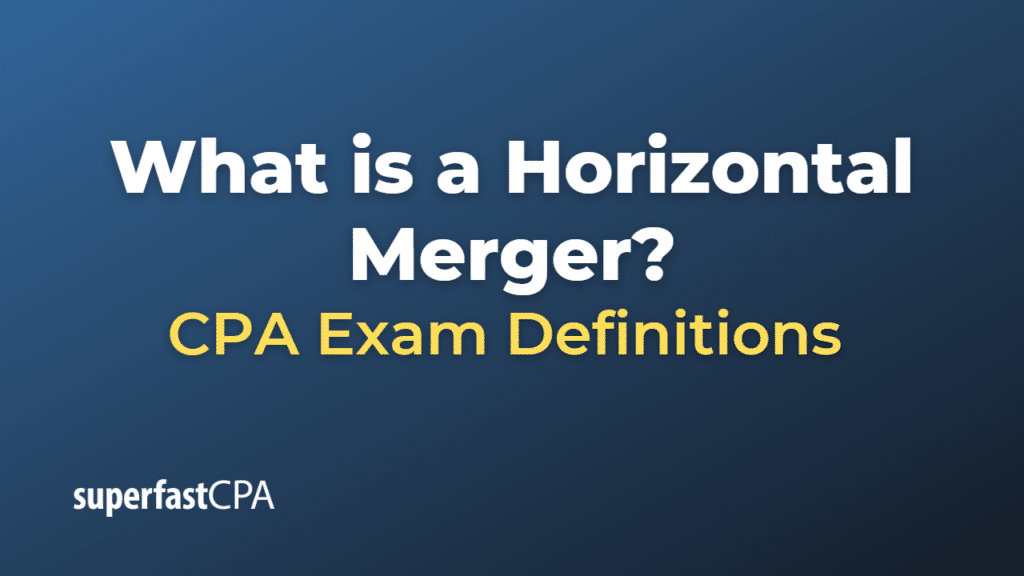Horizontal Merger
A horizontal merger is a merger or business consolidation that occurs between firms operating in the same industry, typically as competitors offering the same good or service. Horizontal mergers are common in industries with fewer firms, as competition tends to be higher and the synergies and potential gains in market share are much greater for merging firms.
The main objectives behind a horizontal merger are to achieve economies of scale, increase market share, obtain synergies, reduce competition, or expand into new markets.
An example of a horizontal merger would be if Coca-Cola merged with Pepsi. Both companies operate in the same industry (beverage industry) and offer similar products (soft drinks). This merger would potentially give the newly formed company a dominant position in the beverage market.
However, such mergers are subject to scrutiny by regulatory authorities like the Federal Trade Commission in the United States or the Competition and Markets Authority in the United Kingdom. These bodies review proposed mergers to prevent the formation of monopolies and protect consumers from potential price hikes and other anti-competitive practices that could result from reduced competition.
Example of a Horizontal Merger
Let’s take an example from the telecommunications industry.
In 2019, T-Mobile US and Sprint, two of the largest telecom companies in the United States, completed a horizontal merger. Both companies operated in the same industry and provided similar services, including mobile phone and internet service.
The merger was designed to help the combined company, which kept the T-Mobile name, compete better with the other large telecom companies, Verizon and AT&T. The combined company had a larger customer base, greater network capacity, and more resources to invest in new technologies like 5G.
However, this merger didn’t happen without considerable scrutiny. The U.S. Department of Justice and the Federal Communications Commission both had to approve the deal, and they only did so after T-Mobile and Sprint agreed to sell off some of their assets to Dish Network, to help create a new competitor in the market.
This example illustrates the main features of a horizontal merger: two companies in the same industry combine to create a larger entity, aiming to achieve economies of scale, increase market share, and compete more effectively. But it also shows that horizontal mergers can attract significant regulatory attention due to concerns about maintaining competition in the industry.












